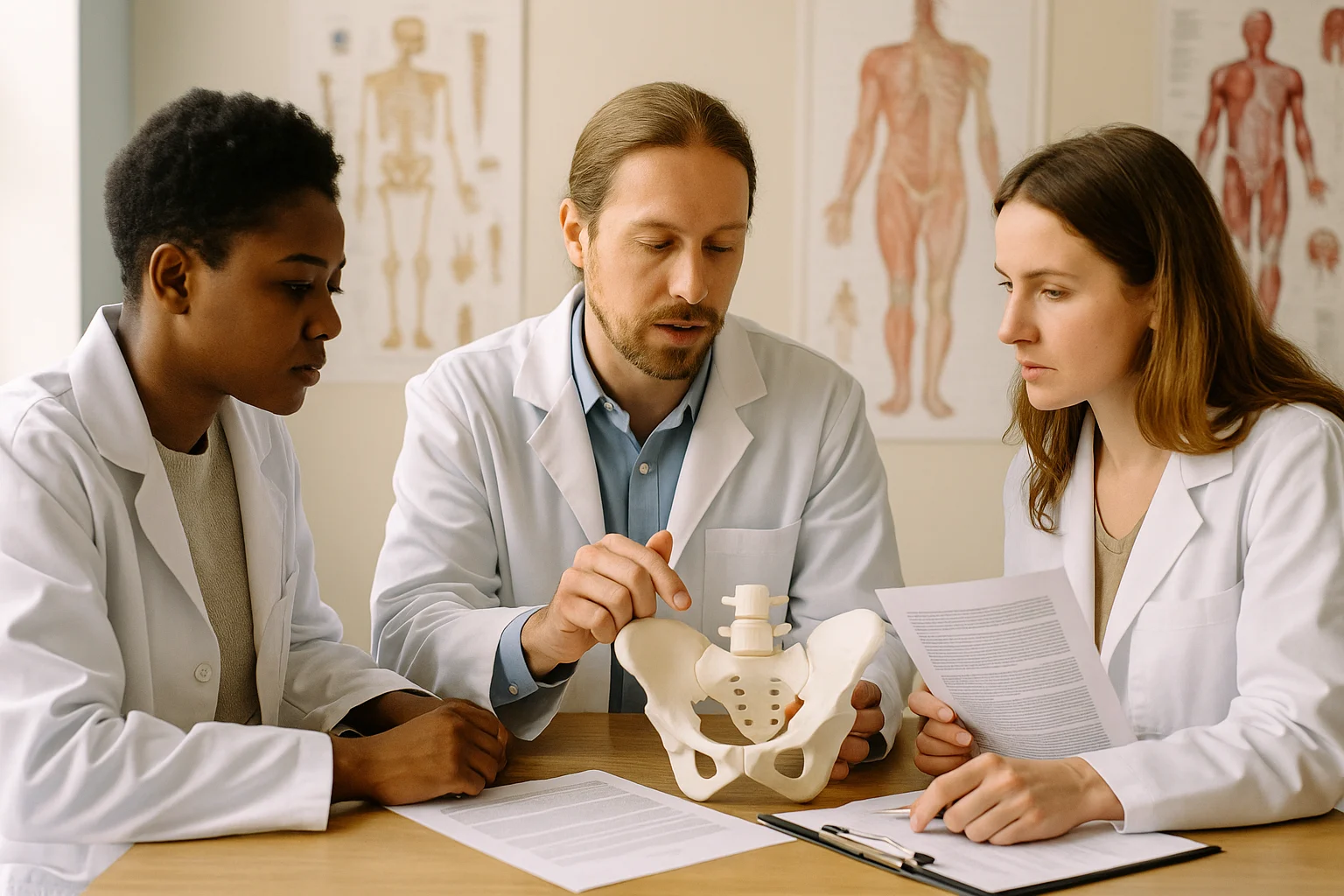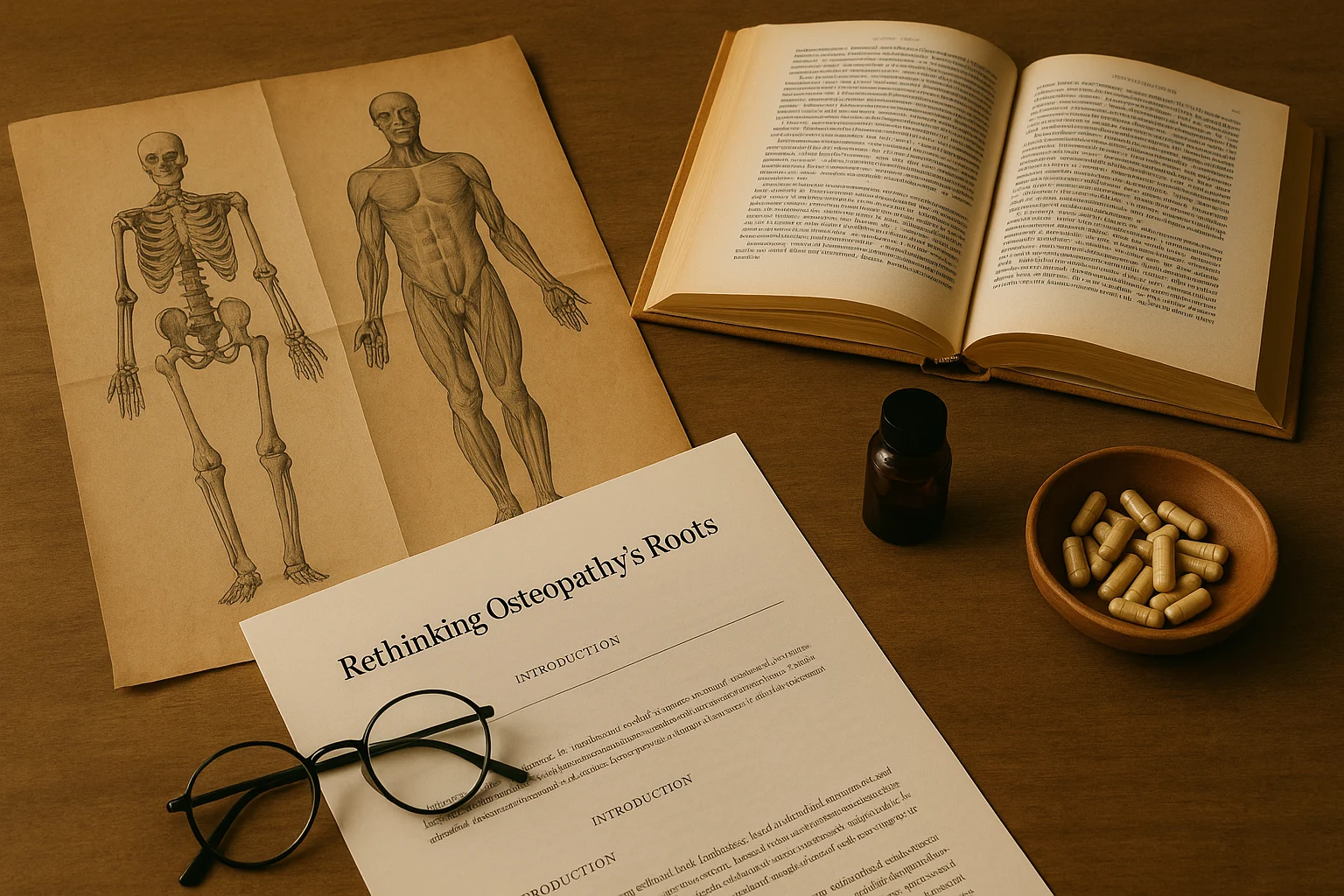The reliability of palpation—particularly when assessing asymmetry in the pelvis and lumbar spine—has long been a cornerstone of osteopathic practice. A recent review by Stovall and Kumar, published in the Journal of the American Osteopathic Association, critically examined whether clinicians can consistently identify bony landmark asymmetries in the lumbopelvic region. Their findings raise important questions for both practitioners and educators in the osteopathic profession.
What the Review Looked At
The authors analyzed 23 studies, of which only nine met inclusion criteria. They focused on the inter- and intra-examiner reliability of palpating common landmarks such as the anterior and posterior superior iliac spines (ASIS/PSIS), the inferior lateral angles (ILAs) of the sacrum, the sacral sulcus, and lumbar transverse processes.
The central question: Can two different examiners, or even the same examiner at different times, agree on whether asymmetry exists?
The results were sobering:
-
Inter-examiner reliability (agreement between different practitioners) was poor to slight across most landmarks, with κ (kappa) values hovering near zero—indicating no better than chance agreement in many cases.
-
Intra-examiner reliability (consistency within the same practitioner) was somewhat better but still modest.
-
Even with examiner training or calibration, improvements in reliability were inconsistent. For example, ASIS assessments showed modest gains, while sacral sulcus palpation remained highly unreliable.
The Fallacies in the Research
While the review highlights real weaknesses in palpatory assessment, it’s important to consider methodological issues that complicate interpretation:
-
Study Design Variability: Different populations, examiner experience levels, and sample sizes make comparisons difficult.
-
Artificial Thresholds for Asymmetry: Some studies set arbitrary cut-offs (e.g., 3 mm) for “positive” asymmetry—values nearly impossible to feel reliably in practice.
-
Overemphasis on Single Landmarks: Real osteopathic diagnosis integrates palpation into the broader TART framework (Tenderness, Asymmetry, Restriction of motion, Tissue texture changes).
-
Statistical Pitfalls: The κ statistic can underrepresent agreement in complex multi-option assessments, giving a distorted picture of reliability.
Implications for Osteopathic Practice
For osteopaths, these findings don’t mean palpation is useless—far from it. Instead, they urge caution in overstating the diagnostic power of single-landmark asymmetry.
Osteopathic clinical reasoning emphasizes patterns, relationships, and motion, not static alignment alone. While some research finds little link between static pelvic asymmetry and low back pain, others suggest asymmetry may correlate with altered motion patterns in symptomatic patients.
The key takeaway: Asymmetry may matter—but only when viewed in functional context.
Lessons for Osteopathic Education
Perhaps the most thought-provoking implication lies in teaching. Students often learn Fryette’s laws, sacral mechanics, and palpatory diagnosis as if they were fixed truths. Yet evidence shows many palpatory assessments lack robust reliability.
Should we stop teaching palpation of asymmetry? Absolutely not. Instead, educators should:
-
Present palpatory models honestly, acknowledging limitations.
-
Emphasize critical thinking and integration with functional findings.
-
Reinforce that palpation is a craft guided by science, not an infallible test.
Moving Forward
For osteopathy to evolve, research must mirror real-world clinical reasoning, not artificial lab constructs. Future reliability studies should standardize methods, use balanced populations, and assess palpation within functional movement contexts.
Clinically, palpation remains invaluable—but it must be interpreted within the totality of the patient encounter, much like cardiac auscultation: variable, yet meaningful in context.
Final Thoughts
This review challenges us to reflect critically on a foundational element of osteopathic practice. Static asymmetry assessment, on its own, appears unreliable. But in the hands of a skilled osteopath—integrated with motion, tissue, and patient response—it remains a vital part of our diagnostic artistry.
What do you think? Should palpatory diagnosis remain central to osteopathy, or should education shift toward functional and movement-based approaches? Join the conversation and share your perspective.
The Article
This article discusses findings from:
Stovall BA, Kumar S. Reliability of Bony Anatomic Landmark Asymmetry Assessment in the Lumbopelvic Region: Application to Osteopathic Medical Education.
J Am Osteopath Assoc. 2010;110(11):667–674.
🔗Read the full paper Here








